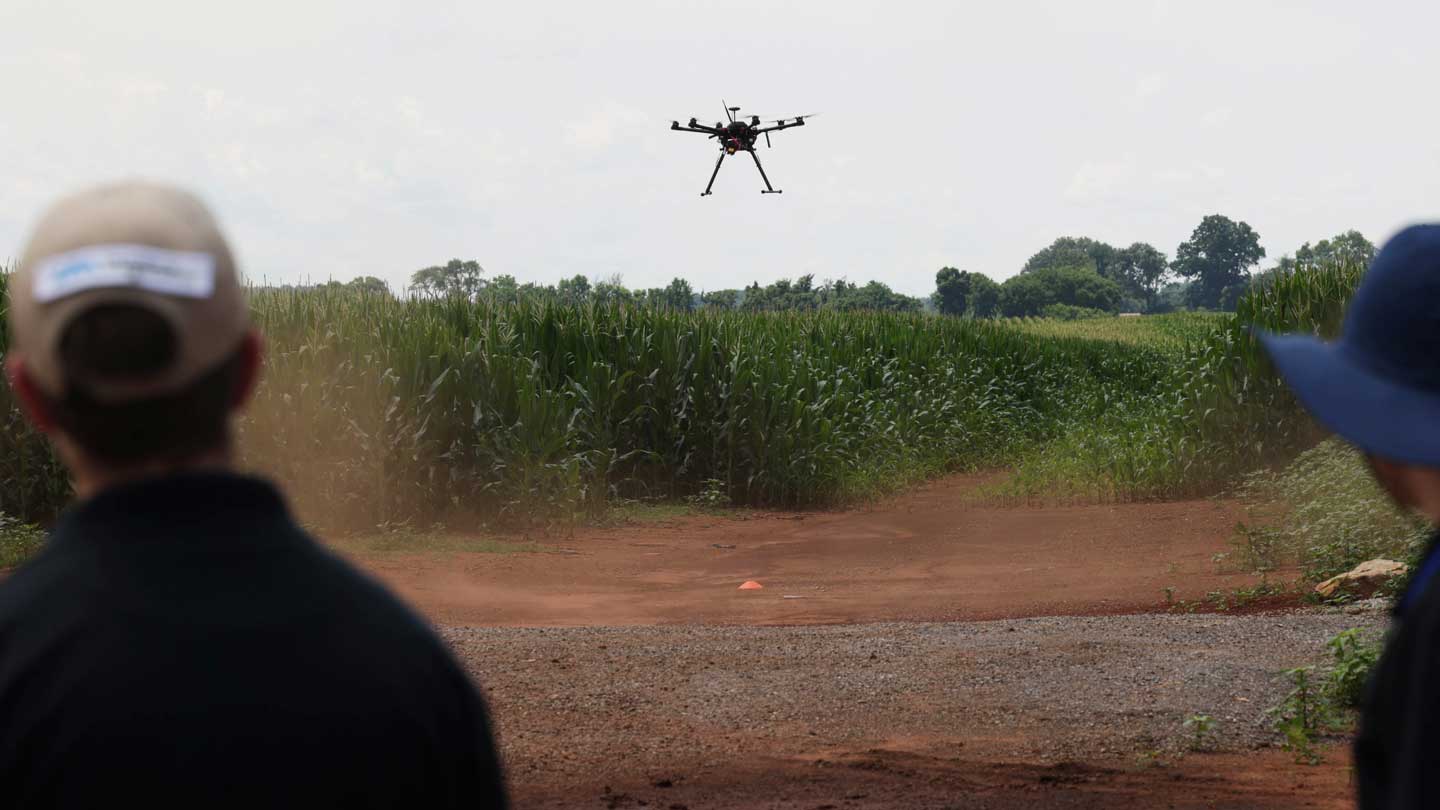
UAH Rotorcraft Systems Engineering and Simulation Center (RSESC) demonstrating capabilities during Huntsville UAH & C-UAS Test Range User Expo 2025.
Michael Mercier | UAH
As Unmanned Aerial Vehicles (UAVs), or drones, become increasingly vital to military, government and civilian applications, conventional machine-learning techniques essential to training these devices often rely on paradigms that require transmitting all raw data from UAVs to centralized servers. This approach can be impractical due to privacy concerns, limited bandwidth and the time required for a task to be completed. Now a researcher in the College of Engineering at The University of Alabama in Huntsville (UAH) has won a $599,830 National Science Foundation grant to address these challenges by using collaborative Artificial Intelligence (AI). The effort pioneers the use of secure multi-modal federated learning (MFL) over UAV networks.
Dr. Dinh Nguyen, an assistant professor in the Department of Electrical and Computer Engineering at UAH, a part of The University of Alabama System, will be the Principal Investigator on the initiative, slated to run through Sept. 2028.
“While secure multi-modal federated learning (MFL) over UAV networks can certainly enhance defense and security missions, its impact extends well beyond military operations,” Dinh explains. “This project focuses specifically on civilian and public-sector uses, such as disaster response, environmental monitoring, infrastructure inspection and cybersecurity.”

Dr. Dinh Nguyen, an assistant professor in the Department of Electrical and Computer Engineering at UAH.
Michael Mercier | UAH
UAVs or drones collect diverse real-time data, ranging from imagery to environmental readings, which is then used to train intelligent systems capable of detecting hazards, assessing damage or monitoring conditions. Distributed AI involves training multiple AI models across different devices or servers without the need to exchange raw data.
“The project’s significance lies in advancing a new paradigm for distributed AI in UAV systems, one that integrates security, adaptability and efficiency,” Nguyen says. “By enabling drones with different sensors and data types to learn collaboratively under limited communication and computation resources, the project establishes a foundation for resilient, privacy-preserving and intelligent airborne networks.”
MFL is a distributed machine-learning technique that enables multiple clients to collaboratively train a single global model using data from different formats, without the need to share each drone’s local, private data.
“In simple terms, multi-modal federated learning lets a group of drones ‘learn together’ without sending all their raw data to a single server,” Nguyen explains. “Each UAV may collect different types of data – for instance, video, temperature or network signals – to train a small local model on its own data, and shares only model updates rather than the original data. These updates are combined to improve a shared global model. This ultimately improves the resilience and reliability of distributed AI in time-sensitive, resource-constrained and adversarial environments.”
To protect privacy, the approach employs a technique called modality-aware differential privacy – an enhancement that adds carefully designed “noise” to model updates so sensitive information cannot be reconstructed. It also uses secure aggregation methods that ensure individual UAV contributions remain confidential. To counter “model poisoning” – encountered when a compromised drone attempts to corrupt the shared model – the framework integrates attack detection mechanisms that recognize and mitigate malicious updates.
“Together, these defenses allow UAV networks to collaborate safely even in adversarial settings, ensuring trustworthy and secure federated learning across diverse aerial systems,” Nguyen concludes. “These advances save bandwidth, reduce communication delays and safeguard sensitive information. Overall, this system makes learning faster, more private and more adaptable – ideal for missions with tight time, energy and resource constraints.”